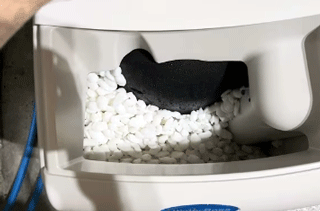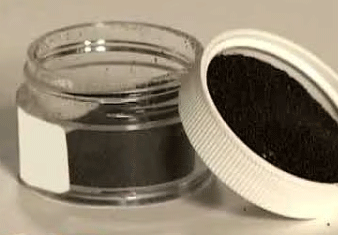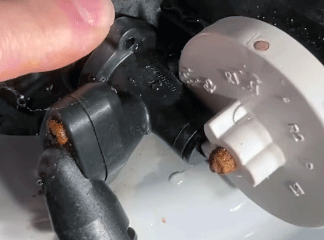Hard water was wreaking havoc in my home—limescale on faucets, dingy laundry, and that annoying film on my dishes. I needed a solution, and after diving into reviews and testing the waters (pun intended), I landed on the WaterBoss 900. This compact, efficient water softener transformed my home’s water quality, and I’m here to share my experience. If you’re tired of hard water woes, trust me, this is the game-changer you need. Let’s break down my journey, the pros, cons, maintenance tips, and how it stacks up against other brands.
My Journey With The Waterboss 900: A Real User’s Take

When I moved into my new home in a region notorious for hard water, I noticed the signs immediately. My skin felt dry, my coffee maker was caked with scale, and my pipes groaned like they were begging for mercy. After researching, I chose the WaterBoss 900, a 36,400-grain capacity softener designed for households like mine with four people and very hard water. Installing it was a weekend project, and within days, I felt the difference—silky water, sparkling dishes, and no more mineral buildup. But it wasn’t all smooth sailing, and I’ll dive into the full scoop below, sharing what I loved, what frustrated me, and how I’ve made it work for my home.
Pros Of The Waterboss 900: Why It’s A Winner In My Book
The WaterBoss 900 has been a lifesaver, and I’m not exaggerating. Here’s why I’m such a fan, broken down into the standout features that make it shine.
- Compact Design: This unit is a space-saver, measuring just 18.8 x 14.8 x 30.8 inches. It fits snugly in my utility closet, unlike bulkier models that demand a whole corner.
- High Grain Capacity: With a 36,400-grain capacity, it handles my family’s water needs effortlessly. It softens up to 90 grains per gallon, perfect for very hard water.
- Fast Regeneration: Regeneration takes about 38 minutes, using only 27 gallons of water. That’s quicker than most, saving me on water bills.
- Self-Cleaning Filter: The built-in 20-micron sediment filter cleans itself, so I don’t fuss with cartridge replacements. It keeps my water free of dirt and sediment.
- Iron Reduction: It reduces ferrous iron up to 10 ppm, a blessing for my well water, which used to leave orange stains on my laundry.
- User-Friendly Controls: The digital control panel with an LCD display is intuitive. I programmed it in five minutes, tailoring settings to my water hardness.
- Energy Efficiency: The high-efficiency mode uses up to 50% less salt and 80% less water than competitors. My wallet appreciates the savings.
- DIY Installation: The kit includes a bypass valve, drain line, and clear instructions. I installed it myself in about three hours, no plumber needed.
- Warranty Coverage: A 5-year warranty on parts and 10 years on the tank gives me peace of mind. It’s reassuring knowing I’m covered.
- Made in the USA: WaterBoss is American-owned, and the 900 is assembled in Ohio. I love supporting a brand with over 30 years of expertise.
Each of these features has made my life easier. The compact size means I don’t sacrifice storage space, and the fast regeneration ensures I’m never waiting long for soft water. The self-cleaning filter is a game-changer—no maintenance headaches! Plus, the iron reduction has saved my clothes from ruin. The controls are so straightforward that even my tech-averse spouse can tweak them. And knowing it’s backed by a solid warranty and made in the USA? That seals the deal for me.
Cons Of The Waterboss 900: Where It Falls Short
Also Read: My Thought on Shell Water Systems Reviews
No product is perfect, and the WaterBoss 900 has its quirks. Here’s what I’ve noticed that might give you pause, based on my experience.

- Plastic Components: The unit is mostly plastic, which feels less durable than metal-heavy competitors. I worry about long-term wear, especially on connections.
- Customer Service Woes: When I had a question about setup, WaterBoss’s support was slow to respond. Online reviews echo this frustration, which is a bummer.
- Ferric Iron Limitation: It only handles ferrous (dissolved) iron, not ferric (rust particles). If your water has rust, you’ll need an additional filter.
- No Salt Level Alert: There’s no indicator for low salt levels, so I have to check manually monthly. It’s a minor hassle but annoying.
- Occasional Leaks: During installation, I noticed a small leak from a loose fitting. Tightening it fixed the issue, but quality control could be better.
- Chlorine Filtration Weakness: It doesn’t filter chlorinated water well, so if you’re on city water, the WaterBoss 950 might be a better pick.
- Regeneration Salt Usage: It uses 6 pounds of salt per cycle, which is more than the 700 model’s 2.5 pounds. For heavy users, this adds up.
- Noise During Regeneration: The regeneration cycle isn’t silent—it hums audibly. It’s not a dealbreaker, but I notice it at night.
- Limited Lifespan: Reviews suggest it lasts 10-15 years, but poor maintenance or high iron content can shorten this. I’m hoping mine hits the upper end.
- Replacement Parts Cost: If something breaks, parts like the control board are pricey. I haven’t needed any yet, but it’s a concern.
These cons haven’t soured me on the WaterBoss 900, but they’re worth considering. The plastic build makes me cautious about rough handling, and the lack of a salt alert feels like a missed opportunity. Customer service could step up, and if your water has ferric iron or chlorine, you might need extra equipment. Still, for my well water and budget, these are manageable trade-offs.
Maintenance Tips: How To Get The Most Out Of Your Waterboss 900
To keep my WaterBoss 900 running smoothly, I’ve learned a few tricks. Here’s how you can maximize its performance and longevity with minimal effort.
- Check Salt Monthly: Refill the brine tank with pellet or solar salt when it’s low. I mark my calendar to avoid forgetting, as low salt stops softening.
- Use High-Quality Salt: Stick to high-purity salt to prevent residue buildup. I use sodium chloride, but potassium chloride works for low-sodium diets.
- Run PowerClean Regularly: For high iron content, activate the PowerClean setting every six months. It regenerates with 5 pounds of salt every other day for two weeks to clear resin bed buildup.
- Inspect for Leaks: After installation, check fittings for drips. I tighten connections quarterly to prevent small leaks from becoming big problems.
- Clean the Resin Bed: If you notice a sulfur smell or reduced performance, run a resin cleaner through the system. I do this annually for good measure.
- Test Water Hardness: Use the included test strips to monitor water hardness. I test every three months to ensure the unit’s settings are spot-on.
- Schedule Regeneration Wisely: Program regeneration for off-peak hours, like 2 a.m., to avoid interruptions. I set mine for when we’re asleep.
- Protect from Extreme Temperatures: Keep the unit indoors, as temperatures below 40°F or above 120°F can damage it. My closet is perfect.
- Flush the System: After long vacations, run a manual regeneration to flush stagnant water. I did this after a two-week trip, and it kept things fresh.
- Read the Manual: The instruction manual is gold—follow it for setup and troubleshooting. I keep mine handy for quick reference.
These tips have kept my WaterBoss 900 humming along. Checking salt and running PowerClean are non-negotiable for me, especially with my iron-heavy well water. Testing hardness helps me fine-tune settings, and scheduling regeneration at night means I never notice the process. Trust me, a little TLC goes a long way with this unit.
Waterboss 900 Vs. Other Brands: How It Stacks Up
I compared the WaterBoss 900 to three popular competitors—Fleck 5600SXT, Whirlpool WHES44, and SpringWell FutureSoft—to see how it holds up. Here’s the breakdown.
WaterBoss 900 vs. Fleck 5600SXT
- Grain Capacity: WaterBoss’s 36,400 grains suit medium households; Fleck’s 48,000 grains are better for larger families.
- Regeneration Time: WaterBoss regenerates in 38 minutes; Fleck takes 90 minutes, using more water (50 gallons).
- Iron Removal: Both handle 10 ppm ferrous iron, but Fleck also tackles some ferric iron, unlike WaterBoss.
- Installation: WaterBoss’s single-tank design is easier for DIY; Fleck’s two-tank setup requires more space and skill.
- Controls: WaterBoss’s digital LCD is user-friendly; Fleck’s meter-based controls are precise but less intuitive.
- Salt Usage: WaterBoss uses 6 pounds per cycle; Fleck uses 8 pounds, increasing costs.
- Warranty: WaterBoss offers 5/10 years; Fleck’s 5-year parts and 10-year tank are similar.
- Price: WaterBoss costs ~$650; Fleck is pricier at ~$800, but more durable.
- Durability: WaterBoss’s plastic build feels flimsier; Fleck’s metal components are sturdier.
- Maintenance: WaterBoss’s self-cleaning filter reduces upkeep; Fleck requires more manual cleaning.
The Fleck 5600SXT is a beast for large homes, but its longer regeneration and higher price make the WaterBoss 900 a better fit for my medium-sized household. I love the WaterBoss’s compact ease, though Fleck’s durability is tempting.
WaterBoss 900 vs. Whirlpool WHES44
- Grain Capacity: WaterBoss’s 36,400 grains edge out Whirlpool’s 44,000 for slightly smaller homes.
- Flow Rate: WaterBoss’s 10 GPM is solid; Whirlpool’s 9 GPM is slightly lower, impacting multiple taps.
- Regeneration: WaterBoss’s 38 minutes and 27 gallons beat Whirlpool’s 43 gallons and 60 minutes.
- Iron Removal: WaterBoss reduces 10 ppm iron; Whirlpool’s iron setting is less effective at 8 ppm.
- Controls: WaterBoss’s LCD is straightforward; Whirlpool’s SmartSoft adapts to usage but is complex.
- Salt Usage: WaterBoss’s 6 pounds per cycle is higher than Whirlpool’s 5 pounds, affecting costs.
- Warranty: WaterBoss’s 5/10 years outshine Whirlpool’s 1-year full warranty.
- Price: WaterBoss at ~$650 is cheaper than Whirlpool’s ~$700.
- Size: WaterBoss’s compact design fits tight spaces; Whirlpool’s one-piece cabinet is bulkier.
- Features: WaterBoss’s self-cleaning filter is a plus; Whirlpool lacks this but has a low-salt indicator.
The Whirlpool WHES44 is smart but pricier and less efficient. I prefer the WaterBoss 900’s quick regeneration and lower cost, though Whirlpool’s low-salt alert is a feature I envy.
WaterBoss 900 vs. SpringWell FutureSoft

- Technology: WaterBoss uses salt-based ion exchange; SpringWell is salt-free, using template-assisted crystallization.
- Grain Capacity: WaterBoss’s 36,400 grains suit hard water; SpringWell doesn’t measure grains, focusing on scale prevention.
- Regeneration: WaterBoss requires regeneration; SpringWell is maintenance-free, no salt or water waste.
- Iron Removal: WaterBoss handles 10 ppm iron; SpringWell doesn’t address iron, needing a separate filter.
- Cost: WaterBoss at ~$650 is cheaper upfront; SpringWell’s ~$1,200 is pricier but saves on salt.
- Installation: WaterBoss’s DIY kit is simple; SpringWell’s professional install adds cost.
- Water Usage: WaterBoss wastes 27 gallons per cycle; SpringWell uses none, eco-friendly.
- Warranty: WaterBoss’s 5/10 years are solid; SpringWell’s lifetime warranty is unbeatable.
- Effectiveness: WaterBoss fully softens water; SpringWell reduces scale but doesn’t soften.
- Maintenance: WaterBoss needs salt refills; SpringWell is virtually maintenance-free.
SpringWell’s salt-free system is eco-friendly and low-maintenance, but its high cost and lack of iron removal make the WaterBoss 900 my choice for well water. If you’re on city water and hate salt, SpringWell might be your pick.
Frequently Asked Questions (Faq)
Yes, WaterBoss softeners like the 900 are reliable for medium-sized homes with hard water. They’re efficient, compact, and handle iron well, but plastic components and spotty customer service are drawbacks. My experience has been positive, with noticeable improvements in water quality.
With proper maintenance, WaterBoss softeners last 10-15 years. Mine’s going strong after two years, but high iron or poor upkeep can shorten lifespan. Regular PowerClean cycles and quality salt help maximize durability.
WaterBoss is an American-owned company based in Groveport, Ohio, with over 30 years in water treatment. The 900 is designed, engineered, and assembled in the USA, which I appreciate for quality assurance.
Yes, it has a built-in, self-cleaning 20-micron sediment filter that removes dirt, sediment, and ferrous iron up to 10 ppm. It’s a huge plus, as it eliminates the need for cartridge changes.
Conclusion: The Waterboss 900 Is My Hard Water Hero
Also Read: My Thought on Shell Water Systems Reviews
After two years with the WaterBoss 900, I’m hooked. It’s tackled my hard water issues, saved my pipes, and made my showers feel luxurious—all without breaking the bank. Despite minor gripes like plastic parts and no salt alert, its compact design, efficiency, and iron removal make it a winner. If you’re battling hard water, I urge you to give the WaterBoss 900 a shot. It’s a small investment for a big upgrade in your home’s water quality. Trust me, you won’t look back.
